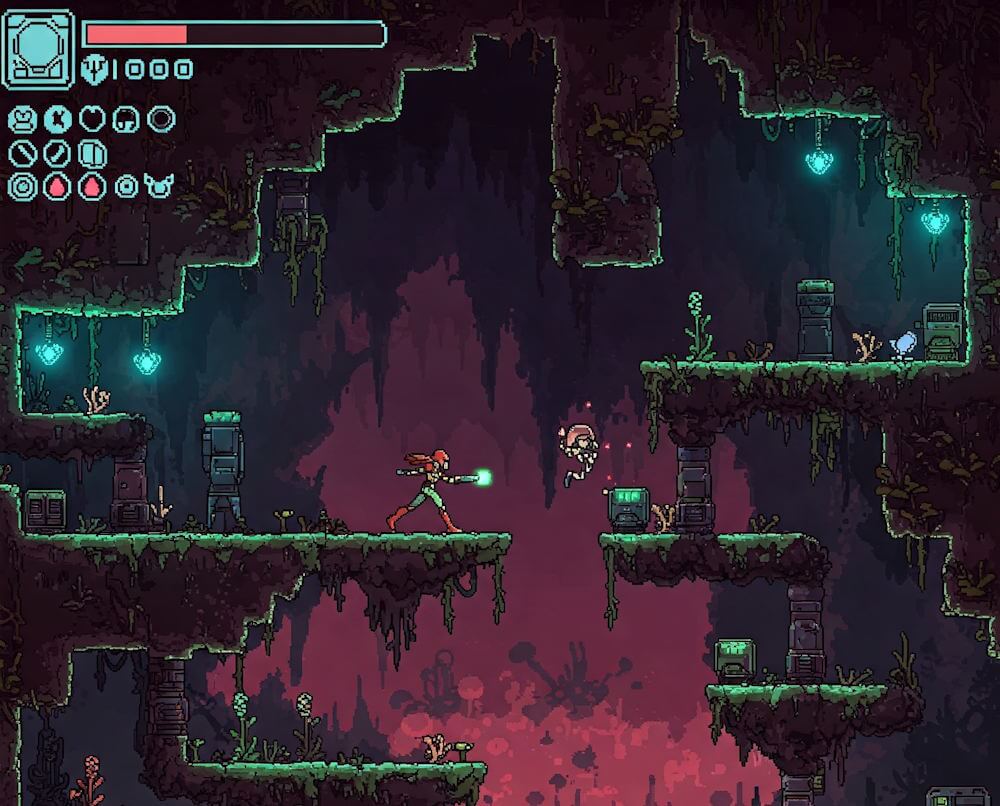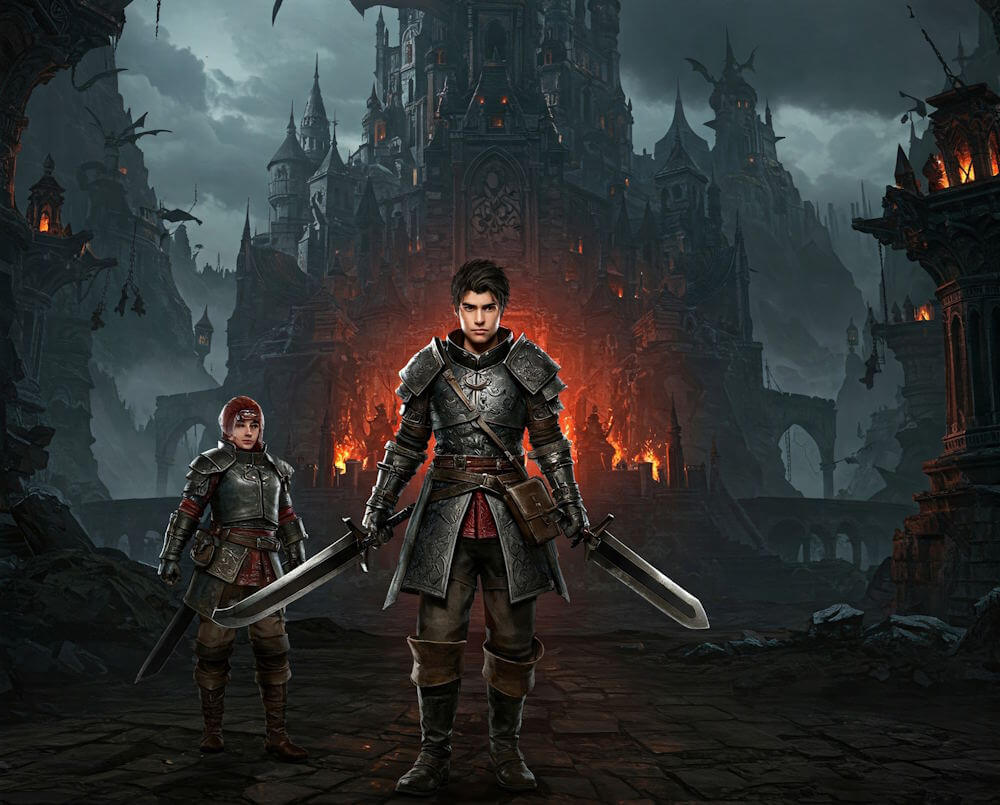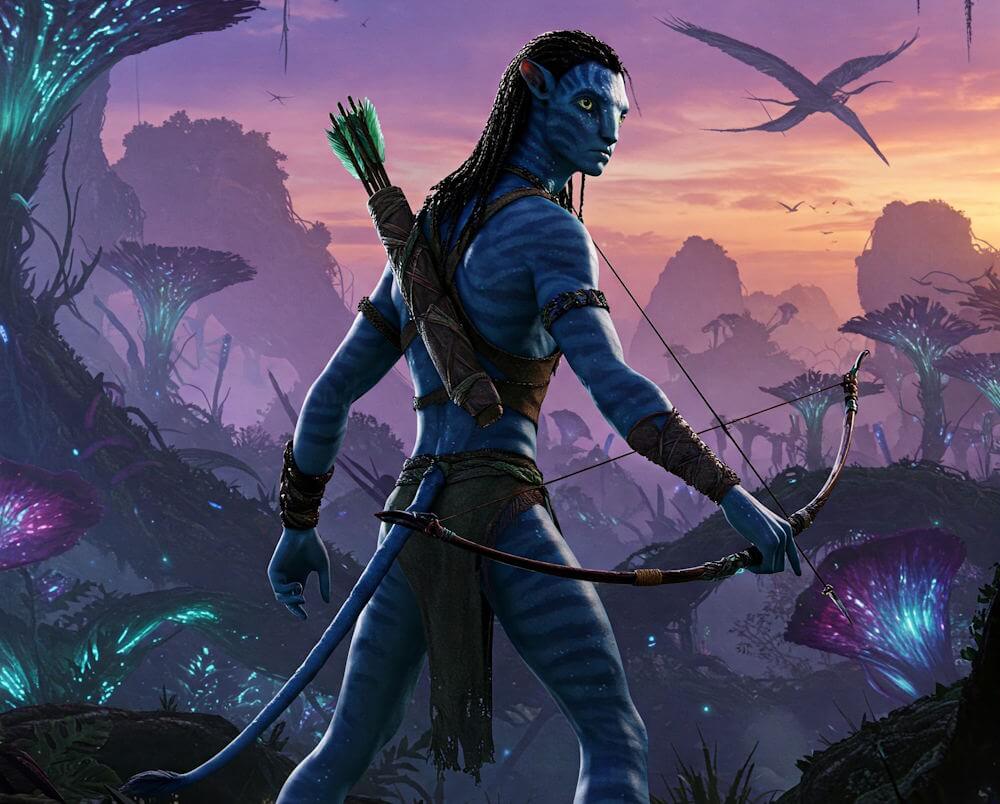The Metroidvania genre is a distinct category of video games that blends exploration, action, and platforming elements into a cohesive gaming experience. The term itself is derived from two iconic game franchises: “Metroid” and “Castlevania.” These games have left a significant mark on the genre, establishing core gameplay mechanics that are still utilized today. The genesis of the Metroidvania can be traced back to the late 1980s and early 1990s when “Metroid” was released by Nintendo and “Castlevania: Symphony of the Night” by Konami, introducing players to expansive, interconnected worlds brimming with mysteries to uncover.
At the heart of Metroidvania gameplay lies the concept of exploration. Players traverse vast environments, often featuring a non-linear design that encourages a deep investigative approach. The interconnected nature of the game world typically demands players to utilize abilities and tools obtained throughout their journey, unlocking previously inaccessible areas, which promotes a sense of discovery. This gameplay loop is crucial in maintaining player engagement, as it rewards persistence and ingenuity.
Another defining characteristic of the Metroidvania genre is the emphasis on skill progression. As players advance, they collect items, upgrades, or abilities that enhance their character’s capabilities, facilitating a gradual empowerment. This element of skill evolution not only heightens the gameplay experience but also fosters a feeling of achievement as players overcome challenges that were previously insurmountable. With each new ability acquired, players gain not only new methods of traversal but also deeper insights into the game’s lore and environment, further enriching the overall narrative.
In summary, the Metroidvania genre is a multifaceted blend of exploration, platforming, and skill progression that engages players in a deeply immersive gaming experience. Its legacy, originating from classic titles, continues to shape modern game design, inspiring new generations of developers and players alike.
The Rise of Metroidvania Games
The Metroidvania genre, characterized by its unique blend of platforming elements and exploration within interconnected worlds, has seen a significant evolution since its inception. This genre traces its roots back to classic titles such as Nintendo’s “Metroid” and Konami’s “Castlevania,” which introduced players to expansive environments that encouraged backtracking as new abilities were acquired. Over the years, these foundational games set the stage for a tradition that would inspire future developers to expand upon their mechanics and design philosophies.
The explosion of interest in Metroidvania games can be traced to the early 2000s, with the emergence of independent developers who sought to revive this genre. Titles like “Axiom Verge” and “Ori and the Blind Forest” demonstrated a modern approach to the genre’s classic elements, blending nostalgia with innovative gameplay. This resurgence aligned with a broader interest in retro-style gaming, where the charm of pixel art and chiptune soundtracks appealed to both seasoned gamers and a new generation. Indie developers, often working with limited budgets, produced high-quality games that captured the essence of traditional Metroidvania while introducing fresh concepts.
Additionally, platforms such as Steam and consoles like the Nintendo Switch have facilitated the distribution of these titles, allowing indie games to reach wider audiences. The democratization of game development has enabled creators to experiment and innovate within the Metroidvania genre, leading to diverse experiences that honor classic design while pushing boundaries. As a result, players are not only treated to rich narratives and intricate designs but also benefit from a dynamic array of mechanics that keep the genre engaging.
This rise in popularity showcases how Metroidvania games have captured the imagination of players and developers alike, demonstrating their ability to adapt and thrive in an ever-evolving gaming landscape. The continued interest in this genre promises further innovations and expansions, solidifying its place in contemporary gaming culture.
Reasons Behind the Genre’s Popularity
The Metroidvania genre has garnered considerable appeal in the gaming community, driven by several factors that resonate with players across various demographics. One of the most prominent elements attracting players is the sense of player freedom that these games offer. Unlike linear gameplay, Metroidvania titles encourage exploration and experimentation. Players are often given the liberty to traverse expansive interconnected worlds, encountering challenges that can be approached in various orders. This open-world design fosters a unique sense of discovery, allowing players to uncover secrets and develop personal pathways through the game’s narrative and environment.
Additionally, the narrative depth in Metroidvania games plays a crucial role in their popularity. Many titles in this genre weave intricate stories that engage players on multiple levels. The storytelling often unfolds gradually as players uncover lore and interact with the environment, enriching the gaming experience. This layered narrative structure engages players emotionally, making them feel invested in the characters and their journeys. Consequently, the appeal of storytelling enhances the immersive qualities of the gameplay, differentiating it from other genres where storylines may be more straightforward.
Satisfying gameplay mechanics also contribute significantly to the genre’s success. Metroidvania games often feature precise controls, rewarding combat systems, and well-designed puzzles that test players’ skills. The thrill of mastering abilities and overcoming obstacles fosters a rewarding gameplay loop, leaving players feeling accomplished. Furthermore, the characteristic inclusion of upgrades and power-ups allows for a sense of progression, maintaining player interest. Coupled with the nostalgic charm of pixel art, which evokes fond memories of classic gaming formats, Metroidvanias successfully blend innovation with retro aesthetics, appealing to both new players and seasoned gamers alike.
The Emergence of Oversaturation
The gaming industry has witnessed numerous trends and genres rise and fall over the decades, with many resulting in a flood of titles that can lead to market oversaturation. The Metroidvania genre, which combines platforming elements with extensive exploration and progression mechanics, has recently seen a significant proliferation of games. This explosion in titles raises questions about the concept of oversaturation and its implications for both developers and players.
In recent years, the Metroidvania genre has gained resurgence, fueled by nostalgic appeal and the success of indie developers who seek to capture the essence of classic games while infusing modern mechanics and storytelling. This popularity has spurred countless game developers to embark on projects that fit within this genre, contributing to an increasing number of releases that often blend familiar motifs and gameplay styles. However, this has also prompted concerns regarding oversaturation, as gamers may soon find themselves inundated with similar experiences.
The effects of oversaturation can be discernible in various aspects of game development and player engagement. As more titles emerge, distinguishing between quality games and lesser works becomes increasingly challenging for consumers. Moreover, the race to capitalize on the Metroidvania trend may lead to diluted originality, where developers prioritize speed and quantity over creativity and depth. The risk lies in the potential loss of what makes the genre special—the innovation and engaging gameplay that truly resonate with players.
Furthermore, the influx of titles may create an environment where exceptional games struggle to receive the recognition they deserve amidst the sea of releases. As such, developers must carefully navigate the line between tapping into the genre’s popularity and ensuring that their contributions stand out. In this context, the emergence of oversaturation raises critical questions about sustainability and the future landscape of the Metroidvania genre itself.
Identifying Signs of Oversaturation
As the Metroidvania genre continues to grow in popularity, a critical examination of the market reveals several indicators that could suggest it is becoming oversaturated. One prominent sign is the increasing prevalence of repetitive gameplay elements. Many recent titles often rely on familiar mechanics such as exploration, backtracking, and item collection without introducing significant variations. For instance, games like “Axiom Verge 2” and “Ender Lilies: Quietus of the Knights” incorporate standard Metroidvania features but struggle to innovate beyond well-trodden pathways.
Another key indicator is the lack of innovation within the genre. When new entries fail to contribute fresh ideas, the appeal of the genre diminishes. Take “Ghost Song,” which, while visually striking, ultimately offers a gameplay experience that echoes previous titles. The absence of substantial innovation can lead to player fatigue, as audiences may become disenchanted with the predictability of gameplay and narrative structures.
Furthermore, the emergence of cookie-cutter titles exemplifies potential oversaturation in the Metroidvania landscape. These are games that closely mimic established frameworks without distinct features that set them apart. A notable example is “Blasphemous,” which, although initially well-received, has seen numerous imitators struggling to find their unique voice. Many of these titles fail to resonate because they lack the compelling stories or unique artistic styles that characterize the genre’s standout successes.
Individually, these signs may not indicate a market under duress, but together they paint a concerning picture of a genre that risks becoming stagnant. Consumers may grow weary of navigating a landscape filled with mediocrity, where groundbreaking experiences are overshadowed by more generic offerings. This situation ultimately raises questions about the longevity and evolution of the Metroidvania genre, emphasizing the need for originality in future releases.
The Balance Between Quantity and Quality
The Metroidvania genre has witnessed remarkable growth in recent years, leading to a significant influx of titles vying for attention in the gaming market. This proliferation raises an important question: How can developers strike a balance between quantity and quality while navigating the competitive landscape? With countless games being released, ensuring that each offering stands out is not merely advantageous; it is essential for viability.
One of the challenges developers face in a saturated market is the pressure to produce games rapidly. While meeting market demand is critical, there is inherently a risk of compromising on quality. A game that lacks engaging mechanics, compelling storytelling, or innovative design can easily get lost amid a sea of options. Therefore, it becomes imperative for creators to innovate and push boundaries, providing distinctive gameplay features that resonate with players.
Innovation in the Metroidvania genre can take many forms, such as incorporating unique character abilities, diverse environments, and intricate level designs. In doing so, developers not only enhance the player’s experience but also ensure their title remains memorable. Furthermore, refining gameplay mechanics can lead to more immersive and satisfying interactions, which are vital in establishing player loyalty and community engagement.
Moreover, developers need to pay attention to player feedback and trends, adapting their design philosophies to meet the evolving expectations of gamers. This approach fosters a culture of continuous improvement and responsiveness, ensuring that the games developed resonate well with the target audience amidst the competitive environment.
In conclusion, the balance between quantity and quality in the burgeoning Metroidvania genre hinges on innovative thinking and dedication to providing unique gameplay experiences. By prioritizing quality, developers can successfully navigate saturation and create titles that stand the test of time.
The Future of Metroidvania Games
The Metroidvania genre, characterized by its intricate exploration and progression mechanics, has seen significant growth in recent years. As developers continue to innovate, several trends and technological advancements are poised to shape the future of Metroidvania games. One promising area is the integration of new technologies, particularly in graphics and gameplay mechanics. Enhanced graphics capabilities, such as ray tracing and high-resolution textures, will allow developers to create more immersive worlds that draw players in, making exploration feel more rewarding.
Moreover, the adoption of artificial intelligence (AI) in game design is likely to introduce dynamic storytelling and character interactions. By utilizing AI, developers can craft more nuanced narratives that adapt to player choices, thereby enhancing engagement. The incorporation of procedural generation may also redefine how levels are designed, allowing for unique experiences that vary with each playthrough. This innovation could address concerns about repetitiveness in gameplay, offering fresh challenges even to seasoned players.
Furthermore, the potential for hybrid genres is an exciting prospect. While the classic Metroidvania formula serves as a solid foundation, combining elements from other genres can lead to innovative gameplay experiences. For example, fusing Metroidvania mechanics with roguelike elements could introduce permadeath and randomized levels, creating a unique twist on exploration and character progression. This blending of genres may attract a broader audience, further propelling the evolution of Metroidvania games.
As the industry moves forward, developers will need to stay attuned to player feedback and emerging technologies. The future of the Metroidvania genre could mark a significant evolution, offering engaging mechanics and uncharted narratives. By focusing on innovation and integration, the genre may continue to thrive, captivating new and returning players alike.
Community Perspectives
The Metroidvania genre, esteeming its roots in classic games that combined exploration with nuanced gameplay mechanics, has garnered a dedicated following over the years. However, as the genre has expanded, opinions about its current state have varied significantly among developers, critics, and gamers alike. A common concern echoed throughout the community is the perceived oversaturation of the market with titles that often appear derivative or lack innovation.
Many developers, particularly those creating indie titles, acknowledge the challenge of standing out in a crowded field. While the majority understand the appeal that inspired numerous releases, they also express the need for fresh ideas and diverse gameplay mechanics to breathe new life into the genre. Some developers advocate for an evolution of the Metroidvania framework, arguing that while nostalgia plays a crucial role, the genre must adapt to meet the expectations of modern gamers. They seek creative avenues that push boundaries rather than conforming to established norms.
Gamers, on the other hand, exhibit a broad spectrum of opinions. Some embrace the abundance of Metroidvania games, appreciating the multitude of narrative experiences and artistic styles available. They thrive on discovering hidden gems within the genre and relish the complexity involved in exploration and character upgrades. Conversely, others voice frustration, arguing that many recent titles dilute the experience, offering similar gameplay loops and aesthetics that fail to captivate audiences long-term. Calls for innovation and unique storytelling are prevalent among this segment of the community, reflecting a desire for depth rather than mere quantity.
Critics of the genre often highlight the need for a balance between homage to past classics and the introduction of innovative features. Reviews increasingly emphasize the importance of unique art styles, compelling narratives, and surprising gameplay mechanics as essential elements that can help future releases break through the prevailing trends of monotony in an ostensibly saturated market. Thus, while opinions range widely, the consensus points toward a collective yearning for innovation within the genre to reinvigorate interest and engagement.
Conclusion: Is Oversaturation a Concern?
In examining the current landscape of the Metroidvania genre, it becomes imperative to consider diverse perspectives to understand whether the market is indeed oversaturated. The genre’s hallmark features, such as exploratory gameplay, intricate level design, and character progression, have fostered a dedicated community of players who celebrate the innovative experiences these games offer. However, as more developers explore this stylistic avenue, questions arise regarding originality and market saturation.
Proponents of the genre argue that the influx of titles could signal a robust renaissance rather than a bleak oversaturation. With rising indie development, creators have the opportunity to push boundaries, focusing on unique mechanics or storytelling approaches. Game developers like Hollow Knight’s Team Cherry have demonstrated that fresh interpretations within the genre can attract widespread acclaim and commercial success. Furthermore, the diversity of artistic styles and gameplay elements can enhance the genre’s richness, providing players with more choices and experiences.
On the other hand, critics might contend that the volume of releases could lead to diminishing returns, as similar gameplay experiences flood the market. Some players may grow disenchanted with repetitive mechanics or narratives, ultimately affecting their engagement with new releases. Additionally, the challenge of distinguishing quality titles from less innovative ones could deter potential players, stifling new entrants into the genre.
In the long term, while the number of Metroidvania games continues to rise, the potential for innovation remains promising. The genre can evolve and expand through experimentation and the introduction of new ideas. Therefore, rather than labeling the current climate as oversaturated, it may be more accurate to view it as an evolving ecosystem. The adaptability of developers ensures that exploration within the Metroidvania genre will persist, captivating audiences for years to come.



